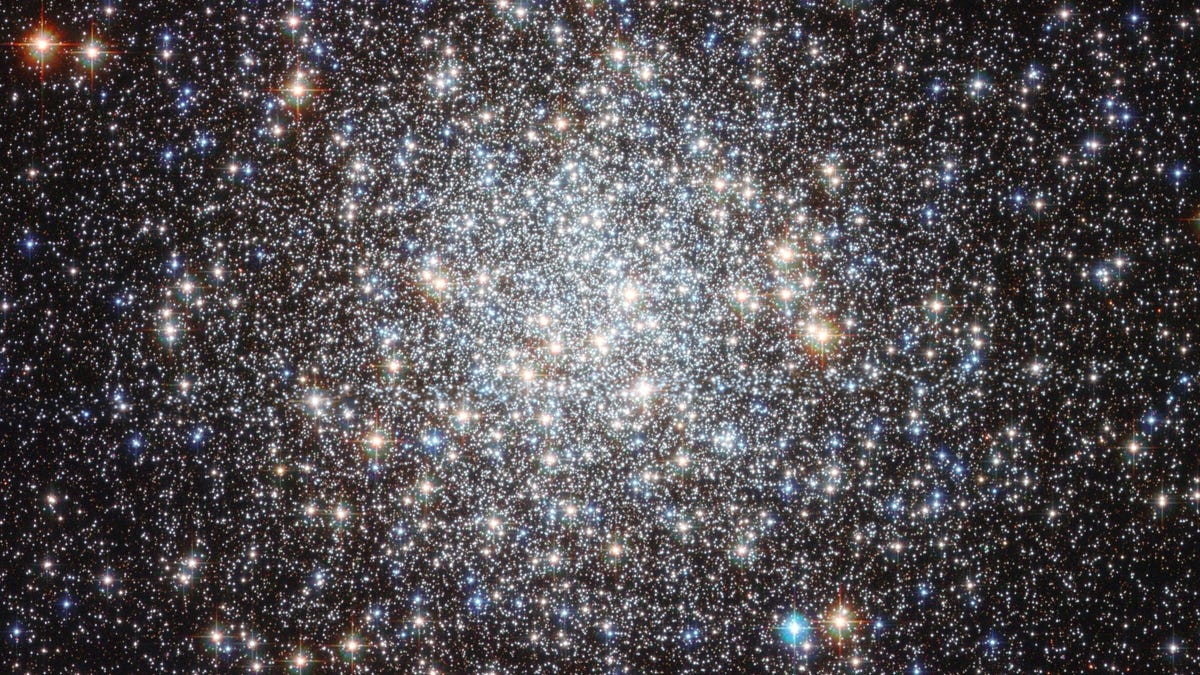Globular clusters could harbour space-faring civilisations
Densely packed star clusters could be the best places to look for civilisations that span multiple star systems.
Extraterrestrial life could exist within our solar system in the form of bacteria and microbes, but if we want to find something more on the sentient side, well, we're going to have to look a lot farther afield.
"A globular cluster might be the first place in which intelligent life is identified in our galaxy," said Rosanne DiStefano of the Harvard-Smithsonian Center for Astrophysics.
Globular clusters are very dense, spherical balls of stars, strongly bound together by gravity. At only 100 light-years or so across, they contain on average around a million stars. They are locked in orbit around the core of a galaxy and tend to be located in the galactic halo, the galaxy's outer reaches.
There are around 150 such clusters orbiting the centre of the Milky Way galaxy. Most of them are in the galactic halo, and are around 10 billion years old, on average. This puts them in the category of Population II stars, which are between 10 and 13 billion years old, and are among the older stars in the universe.
These stars, forming when the galaxy was very young and was made of mostly hydrogen and helium, contain very few of the heavier elements associated with planet formation, such as silicon and iron. This index is known as metallicity. As older stars collapse and die, they undergo a process called nucleosynthesis, which creates the heavier elements that are then incorporated into younger stars. The higher the metallicity, the younger the star.
Only one planet has ever been located inside a globular cluster, orbiting a white dwarf inside Messier 4. This seems to indicate that these heavy elements may be necessary for the formation of planets, which means the likelihood of planets inside globular clusters is low, and the likelihood of life even lower.
In a presentation to the American Astronomical Society last week, however, DiStefano and her colleague Alak Ray of the Tata Institute of Fundamental Research in Mumbai argued that planets have been orbiting stars with very low metallicity. In fact, a study released in 2012 found that rocky, Earth-like planets were just as likely to be found orbiting low metallicity stars as they were high metallicity stars.
Because the clusters are so densely packed, it is also possible that the stars are too close together for stable planetary systems. The planet found in Messier 4 had an unusual orbit, which could suggest that it had originally formed on an entirely different star, and was then passed on to the white dwarf.
This, DiStefano and Ray asserted, doesn't mean stable systems are impossible. For smaller, dimmer stars such as red dwarfs, the habitable zone would be relatively close to the star rather than spread out, and therefore less prone to disruption. Red dwarfs are abundant in globular clusters, and very faint and hard to see. Any planets orbiting them would also be very hard to identify.
This doesn't necessarily mean that there are planets to be found, either. If there were, though, DiStefano and Ray believe globular clusters are the most likely place to find space-faring civilisations. The systems could be very old and very advanced. And, because the stars are so close together, they could achieve interstellar communication and even perhaps transport.
"We call it the 'globular cluster opportunity," DiStefano said. "Sending a broadcast between the stars wouldn't take any longer than a letter from the US to Europe in the 18th century."
"Interstellar travel would take less time too. The Voyager probes are 10 billion miles from Earth, or one-tenth as far as it would take to reach the closest star if we lived in a globular cluster. That means sending an interstellar probe is something a civilization at our technological level could do in a globular cluster."


